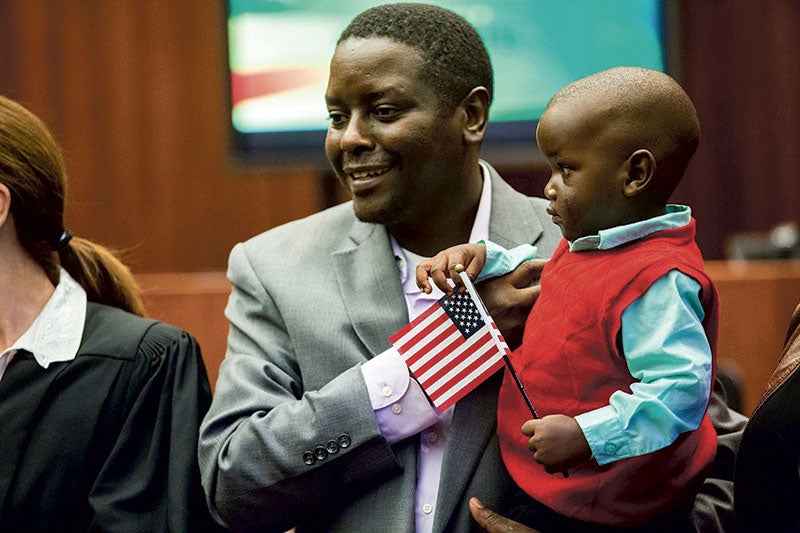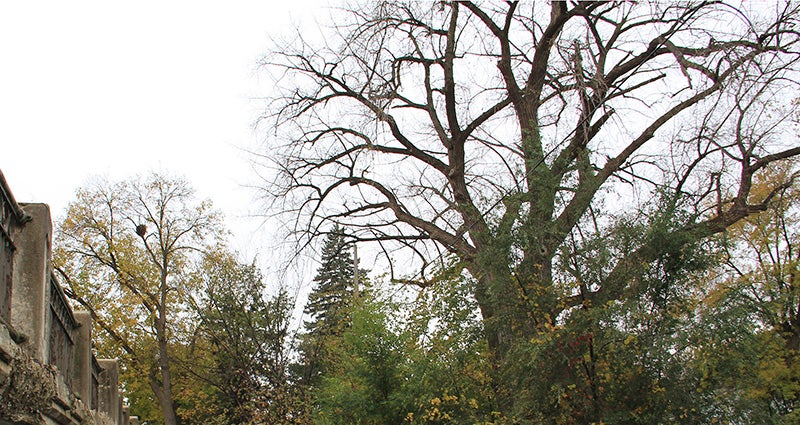A piece of D-Day history; In week before 70th anniversary, VFW finds flag carried into Normandy
Published 11:20 am Friday, June 6, 2014
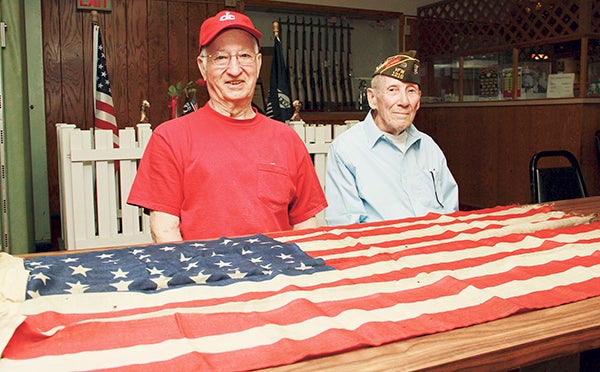
World War II veterans Truman Moen, left, and Charles Rector sit next to an American flag Thursday that was carried into Normandy on D-Day 70 years ago on June 6, 1944. VFW members found the flag last week when cleaning the club’s hall at 300 Fourth Ave. NE for an expansion. — Photos by Jason Schoonover/jason.schoonover@austindailyherald.com
As members of the Veterans of Foreign Wars Post 1216 and the color guard for many years, World War II veterans Truman Moen and Charles Rector are used to handling the American Flag with respect. But on Thursday, they were extra careful when handling a flag carried into Normandy on D-Day, June 6, 1944.
“We’ll handle this thing with care,” Moen said as he and Rector held the flag.
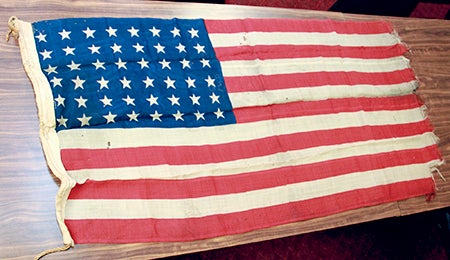
This flag found at the VFW reportedly belonged to Carl Chamberlain, a skipper of an infantry Landing Ship. However, VFW members weren’t sure who Chamberlain was.
Austin VFW members were still buzzing about the flag a little more than a week after finding it in a cabinet while cleaning the club hall at 300 Fourth Ave. NE for a $105,000 remodel.
To VFW Commander Scott Wiechmann, it’s a sign the remodel was meant to happen.
“Every time I handle this flag I get goosebumps,” he said. “I really do. The history of it. The sacrifices that were made on that day.”
Friday is the 70th anniversary of D-Day, which marked the start of the Allied invasion into Western Europe during WWII. Moen, 89, Rector, 83, and other VFW members examined the brittle flag one day before the anniversary and questioned if holes in the flag were from shrapnel on D-Day.
Wiechmann thinks the VFW received the flag from a family in the 1990s. It was found boxed with an unsigned note reading, “This flag was carried ashore on D-Day in the invasion of Normandy. It was made in Liverpool, England. … Mr. Carl Chamberlain skipper of an LSI [Landing Ship, Infantry] gave it to me.”
Wiechmann contacted the Minnesota Historical Society to help preserve and frame the flag. The flag will be fully displayed in the VFW’s new color guard and historical display.
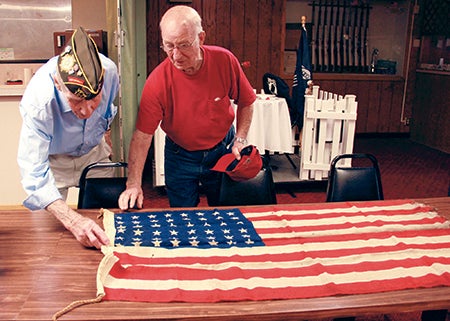
World War II veterans Charles Rector, left, and Truman Moen examine an American flag that was carried into Normandy on D-Day 70 years ago on June 6, 1944.
Moen and Rector marveled at the flag’s age, adding it’s rare to see one as old.
“I really thought it was a great thing,” Rector said.
The Mower County Historical Society has a flag carried by Mower County soldiers in the Civil War in several battles and even during Sherman’s March to the Sea. But to Interim Director Jaimie Timm’s knowledge, the historical society doesn’t have a flag carried in WWII.
“That’s a really neat find,” Timm said of the D-Day flag.
Veterans
Wiechmann said the Austin VFW was once the largest in the state around the 1950s or 1960s at more than 2,500 members — most of them WWII veterans.
Only about 18,000 WWII veterans are left in Minnesota, down from just under 300,000 at one point, according to the National WWII Museum.
People like Moen and Rector have seen that change first hand by serving on the color guard for military funerals.
Moen has served on the color guard for more than 55 years, serving on military funerals. It’s a tough job, but one they have to do.
“I laid a lot of poor guys to rest,” Moen said.
Moen served from 1944 to 1947 in the U.S. Army in the South Pacific and even remembers shaking hands with Gen. Douglas MacArthur. He was discharged as a private first class. Moen didn’t talk about the war after he returned. He fought on many islands in the Pacific.
“I lost too many good buddies over there,” he said.
Rector served from 1945 to 1947 in the U.S. Navy. He was discharged as a seaman first class.
Rector was stationed in the Pacific in Guam and worked to repair ships. He actually enlisted in the Navy at 15 after his parents died when he was a teenager. A recruiter let him in knowing his age to keep him from getting into “kid trouble” working at a cement plant in the Dakotas.
“It really was good for me,” he said of the military.
Moen finished high school after returning from the war. Both Rector and Moen worked at Hormel Foods Corp. for more than 30 years and retired in the 1980s.


